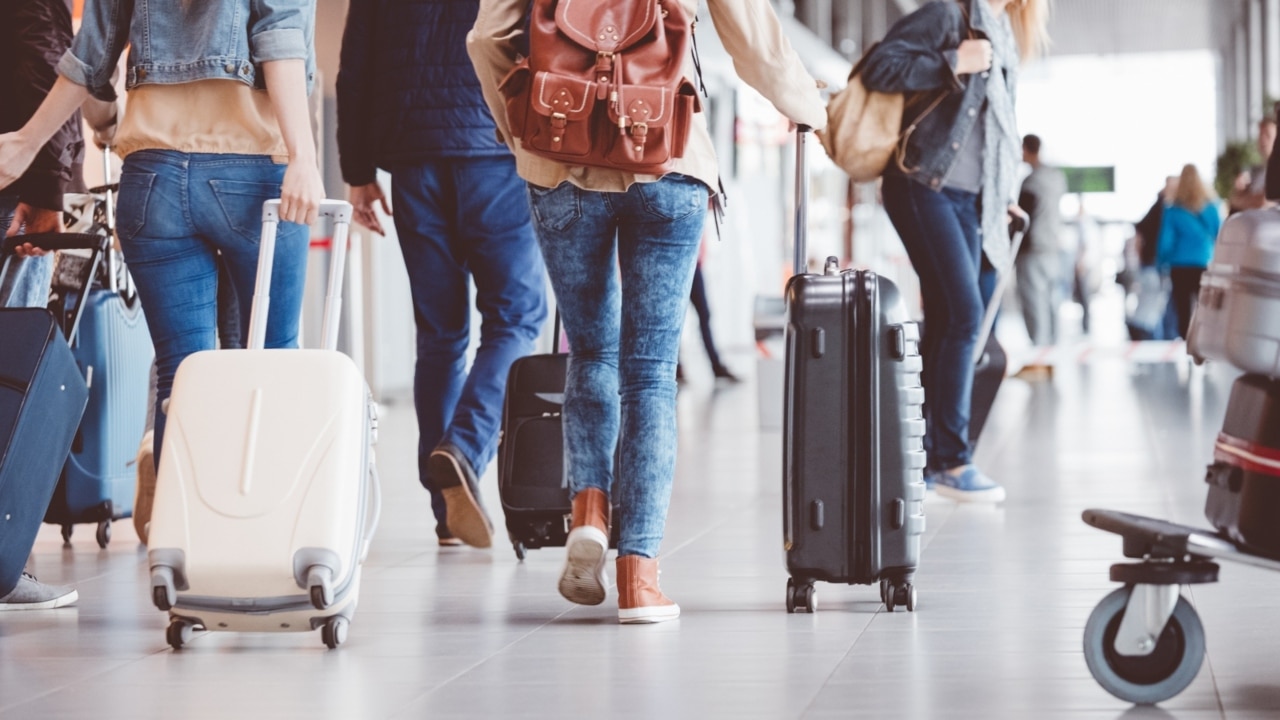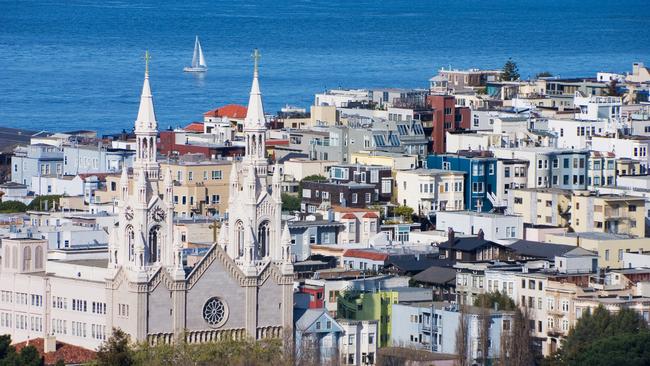International airfares head south as competition and capacity climbs
The long-awaited fall in international economy airfares has finally arrived with Flight Centre data showing prices down as much as 21 per cent on these popular routes.

Business
Don't miss out on the headlines from Business. Followed categories will be added to My News.
A long-anticipated fall in international airfares has finally arrived, with Flight Centre data showing overseas economy fares in the second half of 2024 are down an average of 13 per cent on the same time last year.
The biggest decreases were to destinations where multiple airlines were competing, such as Bali, New Zealand and the US.
Travellers could expect to pay around 21 per cent less for fares to Bali with eight airlines operating direct flights from Australia, with the average economy return fare now $798 compared to $1010 in 2023.
A return ticket to New Zealand was selling for around $905, down from $1041 a year ago and US fares had dipped 12.5 per cent in the last 12 months from $2369 to $2074.
It was likely the cost of travel to the US would fall further later in the year, as United, Delta and American Airlines increased services across the Pacific.
Other destinations seeing double digit drops in price, included Italy, Greece, Japan and India while more modest falls in fares were recorded on routes to the UK, down 8 per cent and Fiji, down 7 per cent.
Flight Centre travel group leisure chief executive James Kavanagh said the falling fares were “great news for travellers, and a product of increased competition and capacity”.
“It’s positive to see an average reduction of around 13 per cent making it an ideal time to book your next overseas holiday,” said Mr Kavanagh.
“International airfare prices still aren’t quite where they were pre pandemic and we believe there’s room for further movement as more airlines and new routes become available.”
While the reduction in fares were good for Australians heading abroad, concerns remained within the local tourism industry about the imbalance between outbound and inbound travellers.
Australian Tourism Export Council managing director Peter Shelley said the number of international leisure visitors was back to only 71 per cent of pre-Covid figures, with key markets such as China still a long way from a full recovery.
“We always knew the restart of tourism would be tough – shutting borders effectively closed many tourism businesses servicing international markets – and more than two years on we are still working hard to revive our visitor markets,” said Mr Shelley.

“More recent headwinds have added to the challenge with geopolitical, environmental, aviation and economic concerns putting pressure on decisions to travel.”
Making life tougher was the increased cost of marketing overseas, which had made it harder to promote Australian tourism businesses.
A recent survey by ATEC found more than three quarters of export tourism businesses had seen hikes of more than 20 per cent in their marketing costs with one in four spending twice the amount they did in 2019.
Mr Shelley was hopeful the federal government would deliver a much-needed boost to Tourism Australia’s marketing funds in Tuesday night’s budget.
“While many of our competitors have doubled down on their tourism marketing spend, Australia has seen state tourism budgets trimmed and the collective pool of marketing funds to promote Australia to high spending international travellers shrink in real terms,” Mr Shelley said.
“Failing to invest in tourism is failing to invest in an Australian success story. We should not forget that in 2019 tourism’s GDP grew by 3.5 per cent, outpacing the national GDP and that is an economic benefit we are currently missing out on.”
There were also concerns that cheaper international airfares would make it even more attractive for Australians to holiday overseas rather than at home.
Mr Kavanagh said domestic fares had stabilised year on year but competition was key to keeping downward pressure on prices.
“It’s vital that there is active competition between the airlines and the more we see of it, the more likely we are to see cheaper airfares, more destination options and a better experience for consumers,” he said.
More Coverage
Originally published as International airfares head south as competition and capacity climbs





